 1996 Peugeot 406 Break (Phase I, 1996) Dimensions, Size & Specs
1996 Peugeot 406 Break (Phase I, 1996) Dimensions, Size & SpecsMeasurements of the 1996 Peugeot 406 Break, engineered for optimal performance and comfort
| Dimensions | |
|---|---|
| Length: | 4725-4740 mm186.0-186.6 in15.5-15.6 ft |
| Width: | 1765 mm69.5 in5.8 ft |
| Height: | 1505 mm59.3 in4.9 ft |
| Trunk Capacity: | 525 liter18.5 cu ft |
| Trunk Capacity (Max): | 1740 liter61.4 cu ft |
| Weight Specifications | |
| Curb Weight: | 1300-1540 kg2866-3395 lbs |
| Maximal permitted Weight: | 1805-1960 kg3979-4321 lbs |
| Tire Specifications | |
| Rims Size: |
|
| Tire Sizes: |
|
The Peugeot 406 Break Phase I, produced between 1996 and 1999, is a practical and stylish station wagon designed to meet the needs of families and those requiring versatile cargo space. Measuring between 4725 mm and 4740 mm (approximately 186.0 to 186.6 inches) in length, this model offers a balanced footprint for urban and highway driving. The width ranges from 1760 mm to 1765 mm (69.3 to 69.5 inches), and the height varies from 1500 mm to 1505 mm (59.1 to 59.2 inches), providing a comfortable interior space without compromising maneuverability.
Weighing between 1300 kg and 1540 kg (2866 to 3395 pounds) in curb weight, the 406 Break is sturdy yet efficient. Its maximum gross weight ranges from 1805 kg to 1960 kg (3979 to 4321 pounds), allowing it to accommodate passengers and cargo reliably.
One of the standout features of the 406 Break is its generous luggage capacity. With rear seats upright, the cargo space is 525 liters (18.5 cubic feet), while folding the rear seats expands the capacity significantly to 1740 liters (61.4 cubic feet). This flexibility makes it ideal for family trips, sports equipment, or transporting bulky items.
The Break rides on 15-inch rims fitted with tire sizes of 205/60 R15 or 195/65 R15, offering a comfortable and stable driving experience. As a versatile station wagon from Peugeot's mid-90s lineup, the 406 Break Phase I combines practicality with classic French styling, making it a desirable option for those seeking a spacious and reliable vehicle.
Discover the standout features that make the 1996 Peugeot 406 Break a leader in its class
Have a question? Please check our knowledgebase first.
The Peugeot 406 Break Phase I (1996) has a length ranging between 4725 mm and 4740 mm (approximately 186.0 to 186.6 inches). Its width is between 1760 mm and 1765 mm (about 69.3 to 69.5 inches), and the height falls between 1500 mm and 1505 mm (approximately 59.1 to 59.2 inches). These dimensions place the 406 Break firmly within the midsize station wagon segment, offering a spacious and comfortable interior while maintaining a manageable footprint for everyday driving and parking.
The curb weight of the Peugeot 406 Break Phase I ranges from 1300 kg to 1540 kg (roughly 2866 to 3395 pounds), while the maximum allowable weight ranges between 1805 kg and 1960 kg (around 3979 to 4321 pounds). The relatively moderate curb weight helps balance ride comfort and fuel efficiency, with the vehicle also offering solid handling characteristics typical of European station wagons from the era. The maximum weight caters to carrying passengers and cargo without sacrificing vehicle control, making it suitable for both family and utility use.
The Peugeot 406 Break Phase I provides a luggage capacity of 525 liters (about 18.5 cubic feet) when the rear seats are in use, which is quite spacious for a station wagon of this class. When the rear seats are folded down, the cargo volume expands significantly to 1740 liters (approximately 61.4 cubic feet), allowing users to transport larger loads easily and making this vehicle highly practical for family trips, moving bulky items, or outdoor activities that require substantial storage space.
Yes, the Peugeot 406 Break Phase I is generally a good fit for a standard residential garage. Most single-car garages have internal dimensions of approximately 2440 mm to 2740 mm (8 to 9 feet) wide and about 4875 mm (16 feet) deep. Given the vehicle's width of up to 1765 mm (69.5 inches) and length up to 4740 mm (186.6 inches), the 406 Break provides enough clearance for opening doors and maneuvering inside the garage comfortably, assuming the garage is of standard size. Its height under 1505 mm (59.2 inches) ensures ample vertical clearance.
The Peugeot 406 Break Phase I typically comes equipped with 15-inch rims paired with tire sizes of either 205/60 R15 or 195/65 R15. These tire dimensions contribute to a balanced driving experience by providing a comfortable ride and good grip on various surfaces, while also maintaining fuel efficiency by not being excessively wide or heavy. The 15-inch rim size was common for station wagons in the mid-90s, offering a good compromise between ride quality and handling.
The Peugeot 406 Break Phase I marked a clear evolution from its predecessor, the Peugeot 405 Estate. While both are station wagons, the 406 Break was generally larger, offering improved interior space and luggage capacity. The 406 Break's length (4725-4740 mm) slightly exceeds that of the 405 Estate, which was around 4550 mm. Width and height increases provide a more modern, spacious cabin, better ergonomics, and enhanced comfort. This increase in size also reflects Peugeot's move towards more premium positioning for the 406 series, with improved design and road manners compared to the 405.
In comparison to contemporaries like the Ford Mondeo Estate and Volkswagen Passat Variant, the Peugeot 406 Break Phase I offers competitive exterior dimensions and cargo space. The 406 Break is slightly longer than the Ford Mondeo Estate (typically around 4710 mm) and the Volkswagen Passat Variant (in the mid-4700 mm range), placing it comfortably in the midsize wagon category. Peugeot's design emphasizes a balance of comfort, driving dynamics, and practicality, with a spacious 525-liter trunk capacity that expands impressively to 1740 liters when folded, which competes well with rivals. Overall, it delivers a solid European alternative in terms of size, space, and driving refinement.
With a length of just under 4.75 meters (around 15.6 feet) and a width below 1.77 meters (about 5.8 feet), the Peugeot 406 Break Phase I remains practical for urban environments and parking. While not as compact as smaller hatchbacks or sedans, its size is manageable, especially in European city settings. The moderate width is beneficial for navigating narrower streets and parking spaces, and although the height is around 1.5 meters (close to 5 feet), the wagon format aids driver visibility. Drivers may find parallel parking easier than larger SUVs, but some care is needed for tight spaces due to its length.
The Peugeot 406 Break Phase I was designed with passenger comfort and spaciousness in mind, particularly across the rear seats and cargo area. With a luggage capacity of 525 liters and expandable to 1740 liters, it caters well to families and those needing versatile hauling options. The wagon's interior was recognized for ergonomic seating, ample legroom, and headroom that exceed many competitors at the time. This focus on interior volume alongside European design standards ensures comfortable travel for passengers on long trips and flexibility for carrying diverse loads.
The 406 Break Phase I typically features 15-inch rims fitted with either 205/60 R15 or 195/65 R15 tires. The relatively moderate tire width (195 mm to 205 mm) combined with the aspect ratios (60 or 65) is designed to provide a balance between ride comfort and handling stability. The tire sizing contributes to smooth driving on paved roads, responsive steering, and adequate grip under various weather conditions. These tire and rim options were common among European wagons of the era, focused on delivering comfort and safety rather than sporty performance.
Discover similar sized cars.

| Production: | 1999-2004 |
|---|---|
| Model Year: | 1999 |
| Length: | 4736 mm186.5 in |
| Width: | 1765 mm69.5 in |
| Height: | 1455-1502 mm57.3-59.1 in |
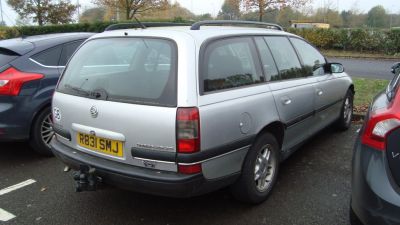
| Production: | 1994-2001 |
|---|---|
| Model Year: | 1994 |
| Length: | 4819 mm189.7 in |
| Width: | 1960 mm77.2 in |
| Height: | 1545 mm60.8 in |

| Production: | 1988-1994 |
|---|---|
| Model Year: | 1989 |
| Length: | 4744 mm186.8 in |
| Width: | 1760 mm69.3 in |
| Height: | 1490 mm58.7 in |
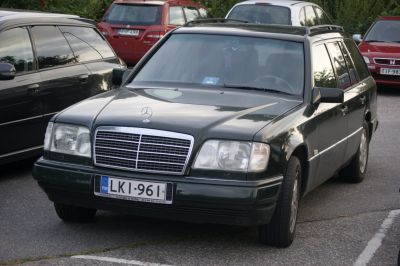
| Production: | 1992-1996 |
|---|---|
| Model Year: | 1993 |
| Length: | 4765 mm187.6 in |
| Width: | 1740 mm68.5 in |
| Height: | 1468-1498 mm57.8-59.0 in |
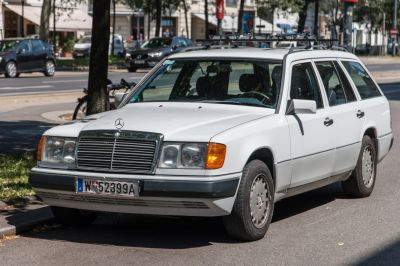
| Production: | 1989-1993 |
|---|---|
| Model Year: | 1989 |
| Length: | 4765 mm187.6 in |
| Width: | 1740 mm68.5 in |
| Height: | 1489-1497 mm58.6-58.9 in |
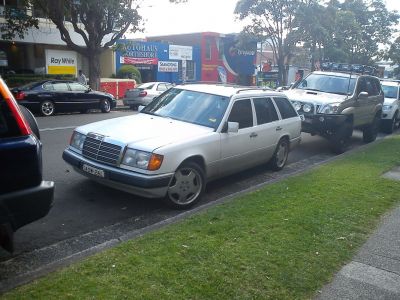
| Production: | 1985-1989 |
|---|---|
| Model Year: | 1985 |
| Length: | 4765 mm187.6 in |
| Width: | 1740 mm68.5 in |
| Height: | 1490-1498 mm58.7-59.0 in |
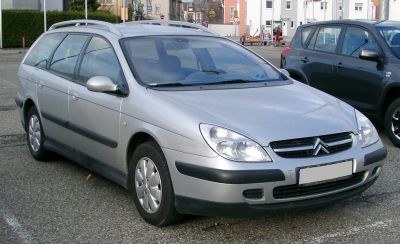
| Production: | 2001-2008 |
|---|---|
| Model Year: | 2001 |
| Length: | 4760 mm187.4 in |
| Width: | 2100 mm82.7 in |
| Height: | 1520 mm59.8 in |

| Production: | 2012-2014 |
|---|---|
| Model Year: | 2012 |
| Length: | 4790 mm188.6 in |
| Width: | 1780 mm70.1 in |
| Height: | 1535 mm60.4 in |
